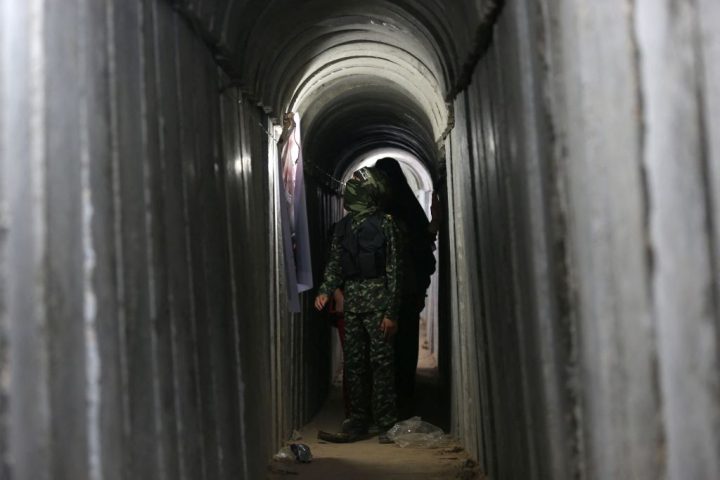As Israeli forces continue to push into Gaza they face threats from Hamas terrorists who use a network of tunnels under the strip. This is referred to by Israel as a ‘metro’. The tunnel network is extensive and exists under civilian homes and streets.
In the brief ten-day war between Israel and Hamas in May 2021, Israel said it had struck 62 miles of these tunnels under Gaza. Today Hamas continues to use them. Israel’s Defense Minister Yoav Gallant spoke to IDF combat engineers this week and vowed that Israel has ‘unique solutions’ for destroying the tunnels and that Hamas members who remained in them would be eliminated.
Avoiding detection by going underground is one way that a low-tech terror group can confront a more sophisticated adversary
Hamas has been using tunnels for many years. Today there are estimated to be up to 310 miles of them underneath Gaza, which is itself only 25 miles long and 5.5 miles wide. These tunnels were built by Hamas to smuggle weapons and other items from Egypt. They were flooded in 2015 by Egypt to stop these activities.
Hamas also built tunnels from Gaza under the border into Israel to threaten Israeli communities prior to the 2014 war. During that 50-day war Israel destroyed 32 tunnels near the border.
However, the use of, and threat from, the tunnels didn’t decline. Instead, between 2014 and 2023 Hamas started tunnelling on overdrive. It may have learned from Isis, who used tunnels in places like Mosul to avoid US-led coalition airpower. Hamas knows that Israel has air superiority and that it uses hi-tech capabilities, such as artificial intelligence and drone swarms, to observe Gaza.
Avoiding detection by going underground is one way that a low-tech terror group can confront a more sophisticated adversary. However, Israel also has solutions to the underground threat. In 2021, it build a billion-dollar smart fence around Gaza that was supposed to detect tunnels. When Hamas saw that, its tactics changed: it decided to use trucks and motorcycles to attack Israel on 7 October, massacring over 1,400 civilians. As such, the tunnel threat is only one part of the Hamas arsenal.
‘Hamas has turned hospitals into command and control centres and hideouts for Hamas terrorists and commanders,’ Rear Admiral Daniel Hagari, Israel’s IDF military spokesman, said on 27 October. The threat from the tunnels is still complicating operations for the IDF as it presses close to Gaza City. Israeli infantry, tanks and other forces began ground operations in late October. Now they are at the gates of the city. However, as images of airstrikes show, the attempt to go after Hamas tunnels also impacts civilians.
The tunnels themselves are believed to exist throughout Gaza; some are complex networks. This is clear from the miles of tunnels Israel says it already destroyed in 2021 and the fact that estimates in Israeli media suggest the terror group has another 300 miles of tunnels still operational.
Globes, the Israeli publication, says there are 1,300 individual tunnels. This is probably hard to quantify, since the whole point of Hamas building the tunnels is that no one knows how many there are.
In Tora Bora in Afghanistan, a natural cave complex was turned into a tunnel system during the war against the Soviets and then later used by terrorists against the US. By contrast, Isis tunnels were never as complex or long. One tunnel was said to be six miles long under Mosul. This is much smaller than the kind of operations Hamas, and other groups have embarked upon.
If Israel continues with its current campaign and does seek to fully defeat Hamas, the full extent of the tunnel empire the terror group built under Gaza may be revealed. Until that happens, a lot of the tunnels will remain similar to former US Secretary of Defense Donald Rumsfeld’s quip about ‘known unknowns’ and ‘unknown knowns’: there are tunnels, but their full extent – no one knows.






Comments